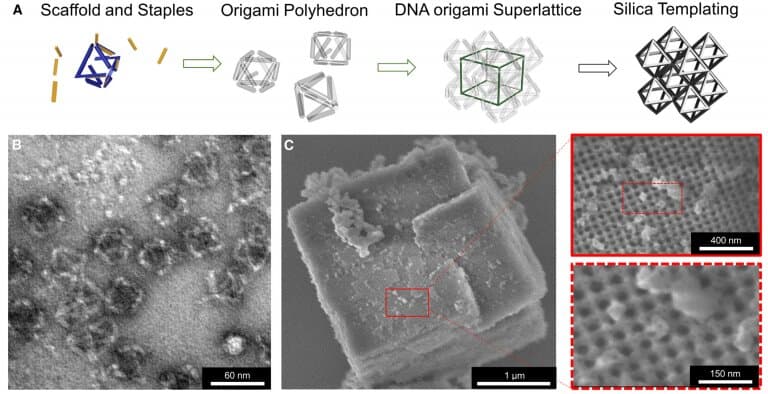
Scientists have successfully combined the intricate structure of DNA with the purity of glass to create a material that boasts both lightness and unprecedented strength. The resulting supermaterial is five times lighter yet four times stronger than steel. This makes it “the strongest known” for its given density, according to the scientists who forged the material from the University of Connecticut, Columbia University, and Brookhaven National Lab.
An unexpected union of strength and lightness
The quest for materials that perfectly balance strength and lightness has always been a challenge. The two characteristics often seem at odds with each other, but that doesn’t have to be the case. In fact, as a team of dedicated researchers showed, these two traits can sometimes go hand in hand.
Most cool science projects feature some equally cool inspiration. This time it came from Iron Man’s iconic suit.
“I am a big fan of Iron Man movies, and I have always wondered how to create a better armor for Iron Man. It must be very light for him to fly faster. It must be very strong to protect him from enemies’ attacks. Our new material is five times lighter but four times stronger than steel. So, our glass nanolattices would be much better than any other structural materials to create an improved armor for Iron Man,” said Oleg Gang, a nanomaterials scientist at Columbia University.
The crux of their approach lies in exploiting the inherent strengths of glass. Yes, that same glass that shatters with the slightest mishap. The reason why glass breaks easily has to do, in most cases, with imperfections in its structure, like cracks or missing atoms. However, in its purest, most flawless form, a tiny piece of glass can endure pressures that would crumble even some of the sturdiest, heaviest materials.
However, crafting large, unblemished glass pieces is extremely challenging. This is why when using glass as a structural material, a size less than a micrometer thick is nearly always perfect. And since it’s lighter than many metals and ceramics, structures made of such pristine nano-sized glass are both powerful and feather-light.

To shape the pure glass particles into a 3D framework, the researchers turned to DNA, which they used as a scaffold. Imagine a house frame, but instead of wood or steel, it’s constructed entirely of DNA. This self-assembling DNA framework acts as a skeleton, onto which scientists meticulously applied a glass coating. This delicate balance results in a material that’s both robust and lightweight, achieving strengths and densities previously thought impossible.
“The ability to create designed 3D framework nanomaterials using DNA and mineralize them opens enormous opportunities for engineering mechanical properties. But much research work is still needed before we can employ it as a technology,” says Gang.
Next, the researchers plan to make even stronger materials using DNA structure. For instance, substituting carbide ceramics for glass could produce materials with even better strength-to-weight ratios. Altering the DNA structure may also heavily improve these ratios. Does this mean that we’ll get to see some of these crazy materials embedded into Iron Man-like body armor someday? Who knows, but now we know someone’s working on it.
The findings appeared in the journal Cell Reports Physical Science.









